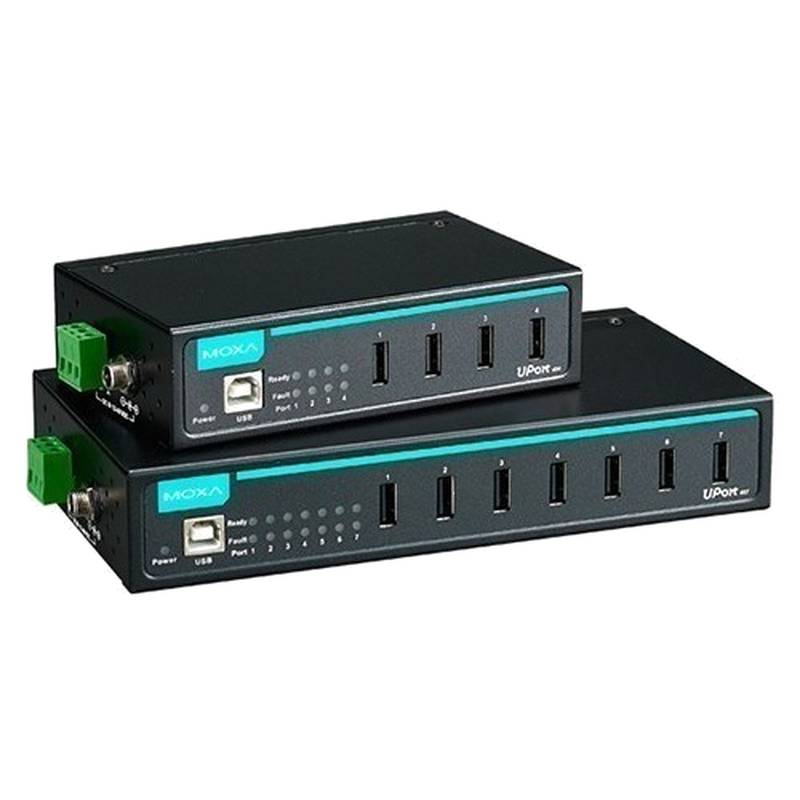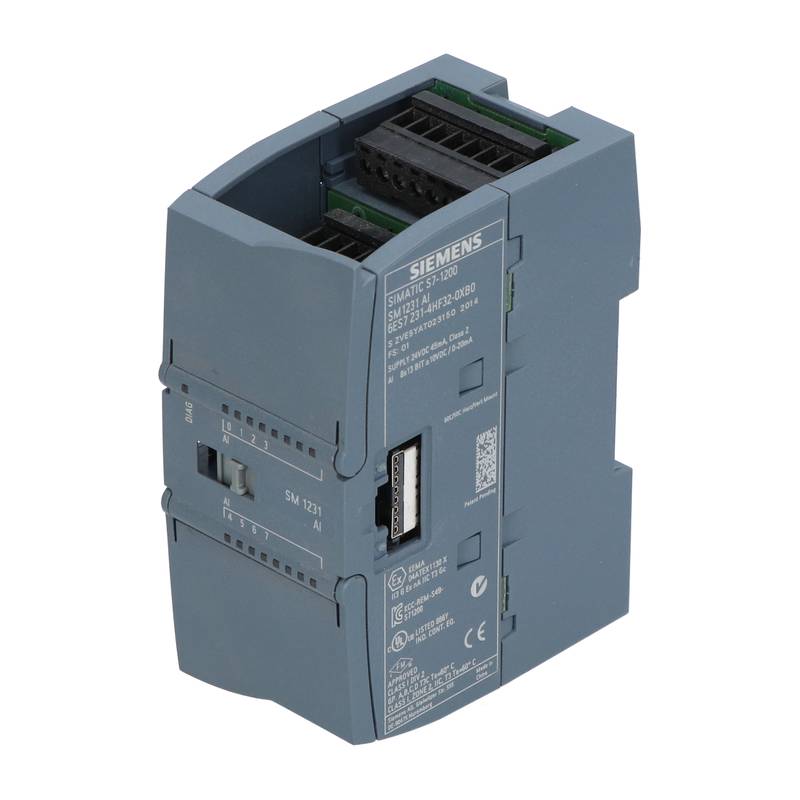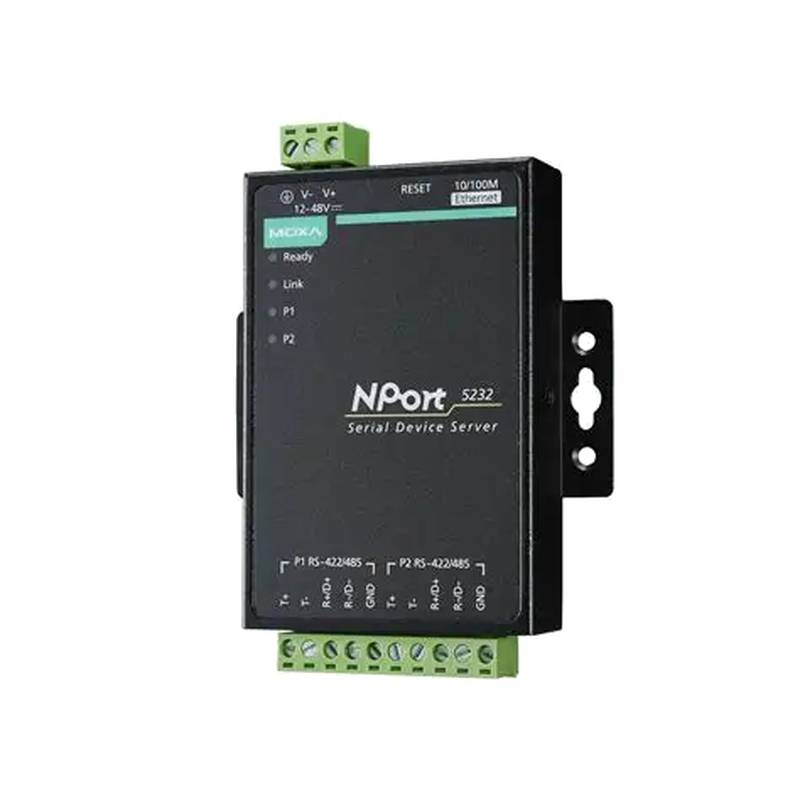
The Moxa CP-114EL is a high-performance 4-port RS-422/485 industrial automation serial board designed to provide robust and reliable serial connectivity for demanding industrial environments. This PCIe card boasts an impressive data transfer rate of up to 921.6 kbps, ensuring swift communication for critical automation tasks. Its advanced 256-byte FIFO buffer per port significantly reduces CPU load, enhancing system efficiency. Engineered with a 15 kV ESD serial line protection, the CP-114EL offers superior durability against electrostatic discharge, a common concern in industrial settings. The board also features 2 kV isolation protection, safeguarding connected devices from power surges and ground loops. Its versatile RS-422/485 interface makes it adaptable to a wide range of industrial protocols and devices.
Product Specifications
| Feature | Specification |
| :------------------ | :------------------------------------------ |
| Interface | PCIe x1 |
| Number of Ports | 4 Ports |
| Serial Standards | RS-422, RS-485 |
| Baud Rate | Up to 921.6 kbps |
| FIFO Buffer | 256 Bytes per port |
| ESD Protection | 15 kV ESD on serial lines |
| Isolation Protection| 2 kV optical isolation |
| Operating Temperature| -40 to 85 °C |
| Supported OS | Windows, Linux |
| Connectors | DB37 male connector |
Core Features & Market Positioning
The Moxa CP-114EL distinguishes itself in the industrial automation market through its robust design and advanced features, specifically targeting applications requiring high reliability and performance in challenging conditions. Its substantial 256-byte FIFO buffer per port is a critical differentiator, minimizing host CPU utilization and optimizing data throughput, which is paramount in real-time control systems. The integrated 15 kV ESD protection directly on the serial lines offers a significant advantage over boards with less robust protection, mitigating downtime and potential hardware damage from electrostatic discharges. Furthermore, the 2 kV optical isolation provides a crucial layer of defense against voltage transients and ground loops, ensuring uninterrupted communication and protecting sensitive equipment. This combination of features positions the CP-114EL as a premium solution for demanding industrial applications where data integrity and system uptime are non-negotiable.
Key Application Scenarios
The versatility and robustness of the Moxa CP-114EL make it an ideal solution for a broad spectrum of industrial applications. In manufacturing environments, it facilitates seamless communication between Programmable Logic Controllers (PLCs), Human-Machine Interfaces (HMIs), and various sensors and actuators, enabling precise process control and monitoring. For building automation systems, the CP-114EL can manage communication with HVAC controls, lighting systems, and security devices, offering centralized management and energy efficiency. In the energy sector, it's instrumental in Supervisory Control and Data Acquisition (SCADA) systems for remote monitoring and control of substations, power plants, and renewable energy installations, ensuring reliable data acquisition from distributed assets. Furthermore, its ability to handle multiple serial protocols makes it suitable for complex industrial networks in sectors like oil and gas, transportation, and water treatment, where reliable data exchange is critical for operational efficiency and safety.
Practical System Integration Guidance
Integrating the Moxa CP-114EL into existing industrial systems is straightforward due to its standard PCIe interface and comprehensive driver support. Installation typically involves physically inserting the board into an available PCIe slot on the host computer and connecting the relevant serial devices using a DB37 to RS-422/485 breakout cable. Moxa provides dedicated drivers for a wide range of operating systems, including Windows and various Linux distributions, simplifying software configuration. For RS-485 multi-drop configurations, it's crucial to implement proper termination resistors (typically 120 ohms) at both ends of the communication bus to ensure signal integrity, especially over longer distances. Careful attention to wiring polarity (A/+, B/-) is also essential for establishing successful communication. For programming, developers can utilize Moxa's extensive API libraries, which abstract the complexities of serial port management, allowing for faster application development and easier integration with existing control software.
Operation and Risk Mitigation
Proper operation of the Moxa CP-114EL is key to ensuring system stability and longevity. Users should adhere to the specified operating temperature range of -40 to 85 °C to prevent thermal stress. When connecting devices, ensure that the serial port configuration (RS-422 or RS-485 mode, baud rate, data bits, parity, stop bits) on the CP-114EL precisely matches the settings of the connected devices to avoid communication errors. In RS-485 mode, incorrect wiring or the absence of termination resistors can lead to data corruption and communication failures, especially in systems with multiple devices. Troubleshooting often involves verifying physical connections, checking driver status, and confirming communication parameters. Common issues like "port busy" errors can usually be resolved by ensuring only one application is accessing the port at a time or by using Moxa's utility tools to diagnose port availability. The robust ESD and isolation protection inherent in the CP-114EL significantly mitigate risks associated with electrical disturbances, but it is still advisable to ground the system properly and avoid connecting/disconnecting cables while the system is powered on in sensitive environments.
Scalability & Long-Term Value
The Moxa CP-114EL offers excellent scalability for industrial automation systems. Its PCIe interface allows for easy expansion by adding multiple boards to a single host system, provided sufficient PCIe slots and system resources are available, thereby increasing the number of available serial ports exponentially. This makes it a highly cost-effective solution for growing operations that require more serial device connectivity over time. Compatibility with industry-standard protocols ensures that the CP-114EL can be seamlessly integrated with a vast array of existing and future industrial hardware and software platforms, protecting existing investments. Furthermore, Moxa's commitment to supporting its products with long-term driver updates and technical assistance ensures that the CP-114EL remains a viable and valuable component in IIoT (Industrial Internet of Things) and digital transformation initiatives, providing reliable connectivity for data acquisition and control in smart manufacturing and beyond.
Frequently Asked Questions
What is the maximum baud rate for the Moxa CP-114EL?
The Moxa CP-114EL supports a maximum baud rate of 921.6 kbps. This high speed is crucial for applications requiring rapid data exchange between devices.
This speed ensures efficient communication for demanding industrial automation tasks. It allows for faster data acquisition and control signals, improving system responsiveness.
Achieving the maximum baud rate often depends on cable length and quality, as well as the capabilities of connected devices. Always verify device compatibility for optimal performance.
How do I configure the RS-485 mode on the Moxa CP-114EL?
RS-485 mode is typically configured via software through Moxa's provided drivers or utility tools. You select the port and choose RS-485 as the interface type.
Ensure you correctly set data bits, parity, stop bits, and flow control to match your connected devices. Incorrect settings will prevent communication.
For multi-drop RS-485 networks, remember to install 120-ohm termination resistors at the two furthest points on the bus to prevent signal reflections.
What operating systems are supported by the Moxa CP-114EL?
The Moxa CP-114EL is compatible with a wide range of operating systems, including popular Windows versions. It also offers support for various Linux distributions, catering to diverse industrial computing environments.
Driver availability is key for seamless integration. Moxa consistently updates drivers to ensure compatibility with newer OS releases and provide enhanced functionality.
When installing, always use the latest drivers provided by Moxa for optimal performance and stability. Refer to the product documentation for a precise list of supported OS versions.
What is the purpose of the 256-byte FIFO buffer?
The 256-byte FIFO buffer in the Moxa CP-114EL stores data temporarily before it is processed by the host CPU. This significantly reduces the burden on the processor.
By holding data, the FIFO buffer allows the CPU to handle other critical tasks, improving overall system efficiency and real-time performance. It prevents data loss during peak loads.
This large buffer size is particularly beneficial in high-throughput applications or environments with fluctuating data demands, ensuring smoother and more reliable serial communication.
Does the Moxa CP-114EL have isolation protection?
Yes, the Moxa CP-114EL features 2 kV optical isolation. This protection safeguards your equipment from electrical noise and ground loops.
Optical isolation creates a barrier between the serial port and the computer, preventing damaging voltage surges from affecting the host system. It enhances system reliability.
This feature is critical in industrial settings where power fluctuations and electrical interference are common, protecting both the serial board and the connected devices.
What is the ESD protection level on the serial lines?
The Moxa CP-114EL offers 15 kV ESD protection directly on its serial lines. This advanced protection guards against electrostatic discharge damage.
Electrostatic discharge can occur easily in dry industrial environments and can severely damage sensitive electronic components. This built-in protection is vital.
With 15 kV protection, the board is much more resilient to electrical transients, reducing the risk of hardware failure and ensuring continuous operation in demanding conditions.
Can I use the CP-114EL for RS-422 and RS-485 communication simultaneously?
The CP-114EL is designed for 4-port RS-422/485 communication. Each port can be independently configured for either RS-422 or RS-485.
This means you can have a mix of RS-422 and RS-485 devices connected to the same board, offering great flexibility in network design. Software configuration is essential for each port.
Always ensure that the configuration for each port matches the specific requirements of the connected device to establish a stable and reliable communication link.
What is the physical interface of the Moxa CP-114EL?
The Moxa CP-114EL utilizes a standard PCIe x1 interface for connection to the host computer. This ensures broad compatibility with modern industrial PCs.
The serial ports are presented via a DB37 male connector on the board. You will need a DB37 breakout cable to connect to standard RS-422/485 terminal blocks or connectors.
The PCIe interface allows for high-speed data transfer between the host system and the serial board, essential for its high baud rate capabilities.
What are the operating temperature and storage conditions?
The Moxa CP-114EL is engineered for industrial use, featuring a wide operating temperature range from -40 to 85 °C. This makes it suitable for extreme environments.
For storage, it is recommended to keep the board within a temperature range of -40 to 85 °C as well, and protected from excessive humidity and direct sunlight.
Operating within these specified conditions ensures the longevity and reliable performance of the serial board, preventing premature failure due to environmental stress.
How do I troubleshoot common communication issues with the CP-114EL?
Begin by verifying all physical connections and ensuring the correct breakout cables are used. Double-check that the serial port settings (baud rate, parity, etc.) in your software match the connected devices.
Confirm that the correct Moxa drivers are installed and that the operating system recognizes the device. Use Moxa's diagnostic tools to check port status and error counters.
For RS-485, ensure termination resistors are correctly placed and that wiring polarity is accurate. If using multiple devices, try communicating with each device individually to isolate the problem.
























